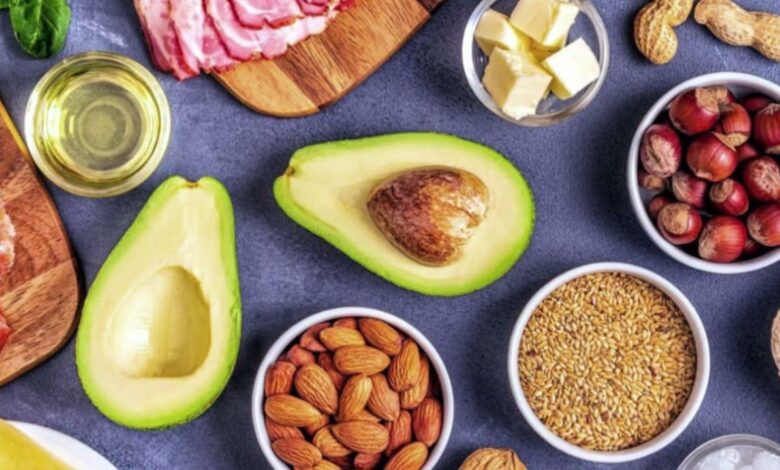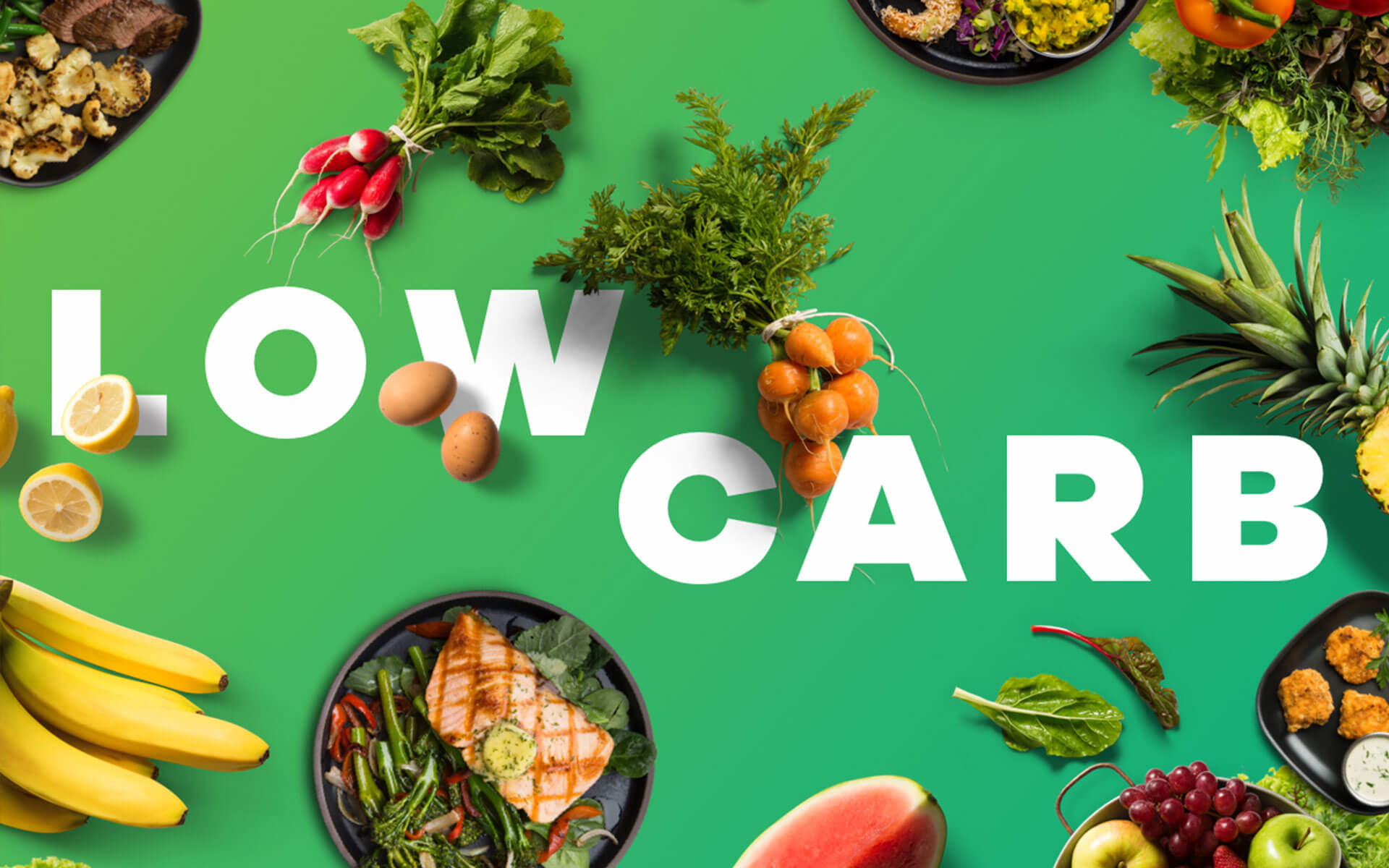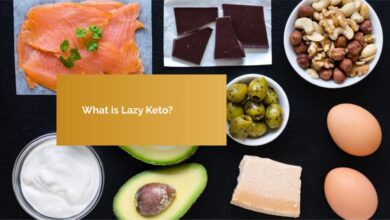
7 Low-Carb Fruits You Can Eat Without Spiking Your Sugar
7 Low-Carb Fruits You Can Eat Without Spiking Your Sugar
Introduction
- The importance of fruit in a balanced diet
- Why carb content in fruits matters for blood sugar management
- Can you enjoy fruits without spiking your sugar levels?
Understanding Low-Carb Diets
- What is a low-carb diet?
- Why managing carb intake matters for blood sugar control
- Benefits of low-carb diets for weight loss and health
The Science Behind Sugar and Carb Consumption
- How carbs affect blood sugar levels
- The role of insulin in regulating blood sugar
- Glycemic index (GI) and glycemic load (GL): What they mean for fruit selection
Choosing Low-Carb Fruits
- Understanding net carbs: What are they and why do they matter?
- Low-glycemic fruits vs. high-glycemic fruits
- Importance of fiber in low-carb fruits
Top 7 Low-Carb Fruits That Won’t Spike Your Sugar
- Berries (Strawberries, Raspberries, Blackberries)
- Low sugar, high in fiber
- Avocados
- Healthy fats, very low in carbs
- Tomatoes
- A fruit that’s low in sugar and versatile
- Lemons and Limes
- Zesty, hydrating, and very low-carb
- Olives
- A low-carb, high-fat fruit option
- Kiwi
- Nutrient-packed but moderate in carbs
- Watermelon
- Refreshing and hydrating, to be eaten in moderation
Fruits to Avoid for Stable Blood Sugar
- High-sugar fruits to steer clear of (e.g., bananas, mangoes)
- Dried fruits and fruit juices: Hidden sugars
- Effects of consuming high-sugar fruits on blood sugar levels
How to Incorporate Low-Carb Fruits into Your Diet
- Adding Fruits to Salads
- Combining fruits with leafy greens for a healthy, low-carb dish
- Low-Carb Fruit Smoothies
- Using low-carb fruits for refreshing smoothies
- Creative Fruit Desserts
- How to make keto-friendly desserts using fruits
- Snacking on Low-Carb Fruits
- Easy and healthy fruit snacks to keep your energy up
Portion Control and Carb Management with Fruits
- How to keep portions in check when eating fruits
- How to track and manage your daily carb intake effectively
- The importance of mindful eating and serving sizes
The Health Benefits of Eating Low-Carb Fruits
- Supporting healthy blood sugar levels
- Improving digestion and gut health with fiber
- Enhancing hydration and nutrition with fruits
Common Myths About Fruits and Sugar
- “Fruit always spikes my sugar levels”
- “All fruits are too high in carbs for a healthy diet”
- “Eating fruit on a low-carb diet is impossible”
Expert Tips for Consuming Fruits While Managing Blood Sugar
- How to consult a nutritionist for personalized advice
- Finding the best times to enjoy fruits without spiking sugar
- How to pair fruits with other foods to balance blood sugar
Conclusion
- Recap of the top 7 low-carb fruits to enjoy without spiking your sugar
- Encouragement to experiment with fruit in your low-carb diet
FAQs
- How many low-carb fruits can I eat per day?
- Are berries the best fruit for keeping blood sugar low?
- Can I have fruit with every meal while on a low-carb diet?
- What is the glycemic index of common fruits?
- How do I track my carb intake while enjoying fruits?
7 Low-Carb Fruits You Can Eat Without Spiking Your Sugar
When you think about eating fruits on a low-carb diet, you may be wondering, “Can I enjoy sweet, nutritious fruits without spiking my blood sugar?” The answer is yes, you absolutely can! While fruits can sometimes be high in sugar and carbs, there are plenty of low-carb fruits that won’t cause the blood sugar spikes that many people fear. In fact, with the right choices, you can enjoy fruits as part of a healthy, balanced diet, even if you’re managing your sugar levels.
In this guide, we’ll explore 7 low-carb fruits that you can incorporate into your diet without worrying about blood sugar spikes. We’ll also talk about how to manage your carb intake effectively, and some fun ways to include fruits in your meals.
Introduction

Fruits are an essential part of a well-rounded diet, packed with vitamins, minerals, and antioxidants. However, for those following low-carb diets like keto or managing blood sugar levels, it can be tricky to figure out which fruits to enjoy. After all, fruits are naturally sweet, and sugar is a carbohydrate. So, how do you make sure your fruit choices won’t sabotage your efforts to manage your carbs and maintain healthy blood sugar levels?
Here’s the good news: not all fruits are created equal when it comes to carb content. Some fruits are naturally low in carbs, especially those that are high in fiber or have high water content. These fruits can satisfy your sweet tooth and provide essential nutrients without spiking your blood sugar.
read also; Tips for Selecting An Affordable Low-Carb Fruits for Your Diet
Understanding Low-Carb Diets
What is a Low-Carb Diet?
A low-carb diet focuses on reducing your intake of carbohydrates, especially refined carbs like sugars and starches. The primary goal of low-carb diets is to reduce insulin spikes and allow the body to burn fat for energy instead of glucose. One of the most popular low-carb diets is the keto diet, where the intake of carbs is restricted to around 20-50 grams per day to help the body enter a state called ketosis.
Why Managing Carb Intake Matters for Blood Sugar Control
Carbohydrates, particularly sugars, can cause a spike in blood glucose levels. When you’re following a low-carb diet, your aim is to keep these spikes under control to maintain stable blood sugar levels. For people with diabetes, insulin resistance, or those looking to lose weight, reducing carb intake can be a game-changer in improving overall health and preventing dangerous spikes and crashes in blood sugar.
Low-Carb Diet Goals: Weight Loss, Blood Sugar Control, and Overall Health
The low-carb diet is not just about losing weight—it also helps manage blood sugar levels and improves metabolic health. By cutting carbs, the body uses fat as its primary energy source, which can promote fat loss and stabilize blood sugar. Many people who follow low-carb diets also experience better mental clarity, increased energy, and improved heart health.
The Science Behind Sugar and Carb Consumption
How Carbs Affect Blood Sugar Levels
Carbs are broken down into glucose, which is used as fuel by the body. However, when consumed in excess, carbs can overwhelm the body’s insulin response, leading to elevated blood sugar levels. Consuming large amounts of sugar or starchy foods can lead to insulin resistance over time, which is a precursor to type 2 diabetes.
The Role of Insulin in Regulating Blood Sugar
Insulin is a hormone produced by the pancreas that helps regulate blood sugar by allowing glucose to enter cells. On a low-carb diet, the goal is to keep insulin levels stable by limiting the intake of carbs, which prevents spikes in blood sugar and ensures the body can continue to burn fat for fuel.
Glycemic Index (GI) and Glycemic Load (GL): What They Mean for Fruit Selection
The glycemic index (GI) measures how quickly a food raises blood sugar after consumption. Low-GI foods are digested and absorbed more slowly, causing a gradual rise in blood sugar. When choosing fruits, you want to focus on those with a low GI to prevent rapid spikes in blood sugar. Glycemic load (GL) takes the serving size into account, so it provides a more accurate measure of how a food will affect your blood sugar in real life.
Choosing Low-Carb Fruits
Understanding Net Carbs: What Are They and Why Do They Matter?
Net carbs are the total carbohydrates minus fiber (and sugar alcohols). Fiber doesn’t impact blood sugar the same way as other carbs, so when you’re following a low-carb diet, it’s important to calculate net carbs, not just total carbs. This is especially crucial when you’re consuming fruits that may contain some natural sugars.
Low-Glycemic Fruits vs. High-Glycemic Fruits
Low-glycemic fruits, such as berries and avocados, release sugar into the bloodstream slowly, helping to maintain stable blood sugar levels. High-glycemic fruits, such as bananas, grapes, and pineapples, cause rapid spikes in blood sugar and are best avoided or consumed in very limited quantities.
Importance of Fiber in Low-Carb Fruits
Fiber is crucial for digestion, and it also helps to stabilize blood sugar levels. The more fiber a fruit contains, the lower its net carb content becomes, which is why fruits like berries, avocados, and tomatoes are great options for a low-carb diet. Fiber also keeps you feeling full longer, which helps with hunger management on a low-carb or keto diet.
Top 7 Low-Carb Fruits That Won’t Spike Your Sugar
Berries (Strawberries, Blueberries, Raspberries)
Berries are the quintessential low-carb fruit. They are rich in antioxidants, vitamins, and fiber, yet low in sugar and carbs. For example, a half-cup of raspberries contains just 3 grams of net carbs, making them an excellent choice for those on a low-carb diet. Blueberries and strawberries are similarly low in carbs, and they can be enjoyed as a snack or added to smoothies and desserts.
Avocados
While technically a fruit, avocados are incredibly low in carbs and high in healthy fats. They are the perfect low-carb fruit for those on a keto diet. Avocados are also high in fiber, which helps balance their carb content. They’re great for making keto-friendly snacks or adding to salads and smoothies.
Tomatoes
Although often mistaken for a vegetable, tomatoes are actually a fruit. They are low in carbs and high in vitamins, making them a fantastic addition to a low-carb diet. A small tomato contains just 3 grams of net carbs and is rich in potassium, vitamin C, and antioxidants, all of which contribute to your overall health.
Lemons and Limes
These citrus fruits are low in carbs and are packed with vitamin C, which supports immune health. Lemons and limes can add a refreshing zest to water, salads, or desserts, and they have virtually no impact on blood sugar.
Olives
Olives are another great fruit option for low-carb diets. They are rich in healthy fats and very low in carbs. A small handful of olives provides healthy fats and can be a satisfying snack or added to salads for extra flavor and texture.
Moderately Low-Carb Fruits for Your Diet
Kiwi
Kiwi is a great source of vitamin C, fiber, and antioxidants, but it is slightly higher in carbs than berries. A medium kiwi contains about 6-7 grams of net carbs, so it’s best to enjoy it in moderation. Kiwi is a nutrient-dense option that can be included in a balanced low-carb diet.
Watermelon
Watermelon is mostly water, making it a hydrating and refreshing fruit. While it’s low in calories and has a decent amount of fiber, it does have a higher glycemic index compared to other low-carb fruits. It’s best enjoyed in moderation to avoid spiking your blood sugar levels.
Peaches
Peaches are another fruit to enjoy in moderation on a low-carb diet. A medium peach contains about 8 grams of net carbs, making it a moderate option for those who want a sweet fruit without overindulging in sugar.
Grapefruit
Grapefruit is low in carbs and rich in vitamin C, making it a great addition to your low-carb diet. It can help curb your appetite and support healthy digestion, but like other moderate fruits, it should be eaten in small portions to avoid exceeding your carb limits.
Fruits to Avoid for Stable Blood Sugar
High-Sugar Fruits to Limit
Fruits like bananas, grapes, mangoes, and pineapples are high in sugar and should be limited or avoided on a low-carb diet. These fruits can cause a rapid rise in blood sugar, which could interfere with ketosis or cause insulin spikes.
Dried Fruits
Dried fruits are concentrated in sugars and should be avoided on a low-carb diet. Even small portions of dried fruit can contain a lot of carbs, so it’s best to stick to fresh fruits when possible.
Fruit Juices and Concentrates
Fruit juices, even 100% pure juices, are high in sugar and low in fiber, which makes them unsuitable for low-carb diets. They can quickly spike your blood sugar levels, so it’s best to avoid them.
How to Incorporate Low-Carb Fruits into Your Diet
Fruit in Smoothies
Smoothies are a great way to combine low-carb fruits like berries and avocado into one nutrient-packed drink. Use unsweetened almond milk or coconut water as a base to keep your smoothie low in carbs.
Adding Fruits to Salads
Top your salads with fresh slices of avocado, strawberries, or tomatoes for a burst of flavor and nutrition without the carb overload.
Keto-Friendly Desserts
You can make keto-friendly desserts by incorporating low-carb fruits like raspberries, strawberries, and blueberries into whipped cream or coconut milk-based puddings.
Snacking on Low-Carb Fruits
Enjoy a small handful of berries, olives, or a few slices of avocado as a snack during your fasting period or as a mid-day energy boost.
Portion Control and Carb Management for Fruits
Measuring Serving Sizes
To avoid overconsumption, measure your servings of low-carb fruits. A small handful of berries or half an avocado can be the perfect serving size for most low-carb diets.
How to Track Net Carbs
Use apps or websites like MyFitnessPal or Carb Manager to track your carb intake. These tools will help you calculate the net carbs in fruits and other foods you eat.
Mindful Eating and Portion Control
It’s easy to overindulge on even low-carb fruits, so practice portion control and stay mindful of your carb limits.
The Benefits of Low-Carb Fruits in Your Diet
Supporting Weight Loss Goals
Low-carb fruits are a great way to satisfy your sweet tooth without exceeding your daily carb limit, helping you stay on track with your weight loss goals.
Providing Essential Nutrients Without the Carb Overload
Low-carb fruits offer essential vitamins, minerals, and fiber without spiking your blood sugar. This makes them a healthy addition to your diet.
Helping Stabilize Blood Sugar Levels
Low-carb fruits, especially those high in fiber, can help stabilize your blood sugar levels, which is crucial for weight management and overall health.
Common Myths About Fruits and Keto
“Fruit Is Too High in Carbs for Keto”
While many fruits are high in carbs, there are plenty of low-carb options that can be enjoyed on a keto diet.
“You Can’t Have Any Sugar on Keto”
Keto doesn’t mean zero sugar; it means low sugar. Natural sugars from fruits like berries are perfectly fine in moderation.
“Fruit Juices Are Safe for Keto”
Fruit juices are often high in sugar and should be avoided on a keto diet. Stick to whole fruits for better control over your carb intake.
Expert Tips for Successful Fruit Consumption on Keto
Consulting a Nutritionist
If you’re new to keto, a nutritionist can help you navigate fruit selection and portion control. They can provide personalized recommendations to fit your carb tolerance.
Staying Hydrated and Electrolyte Balance
Drinking enough water and maintaining electrolyte balance is crucial for staying hydrated while on keto. Many low-carb fruits, like watermelon, can help with hydration.
Balancing Fruits with Other Nutrients on Keto
Combine fruits with healthy fats and proteins to ensure your meals are well-balanced and nutritious, while still keeping carbs in check.
Conclusion
Incorporating fruits into your low-carb or keto diet is possible with the right selections and portion control. By choosing low-carb fruits like berries, avocados, and tomatoes, you can enjoy the nutritional benefits of fruits without compromising your progress. Keep tracking your carbs, stay mindful of your portions, and enjoy the variety of flavors that low-carb fruits can bring to your meals.
FAQs https://en.wikipedia.org/wiki/FAQ
How much fruit can I eat on a low-carb diet?
You can aim for 1–2 servings of low-carb fruits per day, keeping your daily net carbs within your limit.
Can I have fruit on keto and still stay in ketosis?
Yes, as long as you choose low-carb fruits and eat them in moderation, you can stay in ketosis.
What is the best fruit to eat on keto for weight loss?
Berries like strawberries, raspberries, and blackberries are excellent for weight loss due to their low carb content and high fiber.
Can I eat fruit on keto for breakfast?
Yes, you can eat small servings of low-carb fruits as part of a balanced keto breakfast.
How do I avoid overconsuming carbs from fruit on keto?
Be mindful of portion sizes, track your net carbs, and focus on low-carb fruits to stay within your daily limit.




